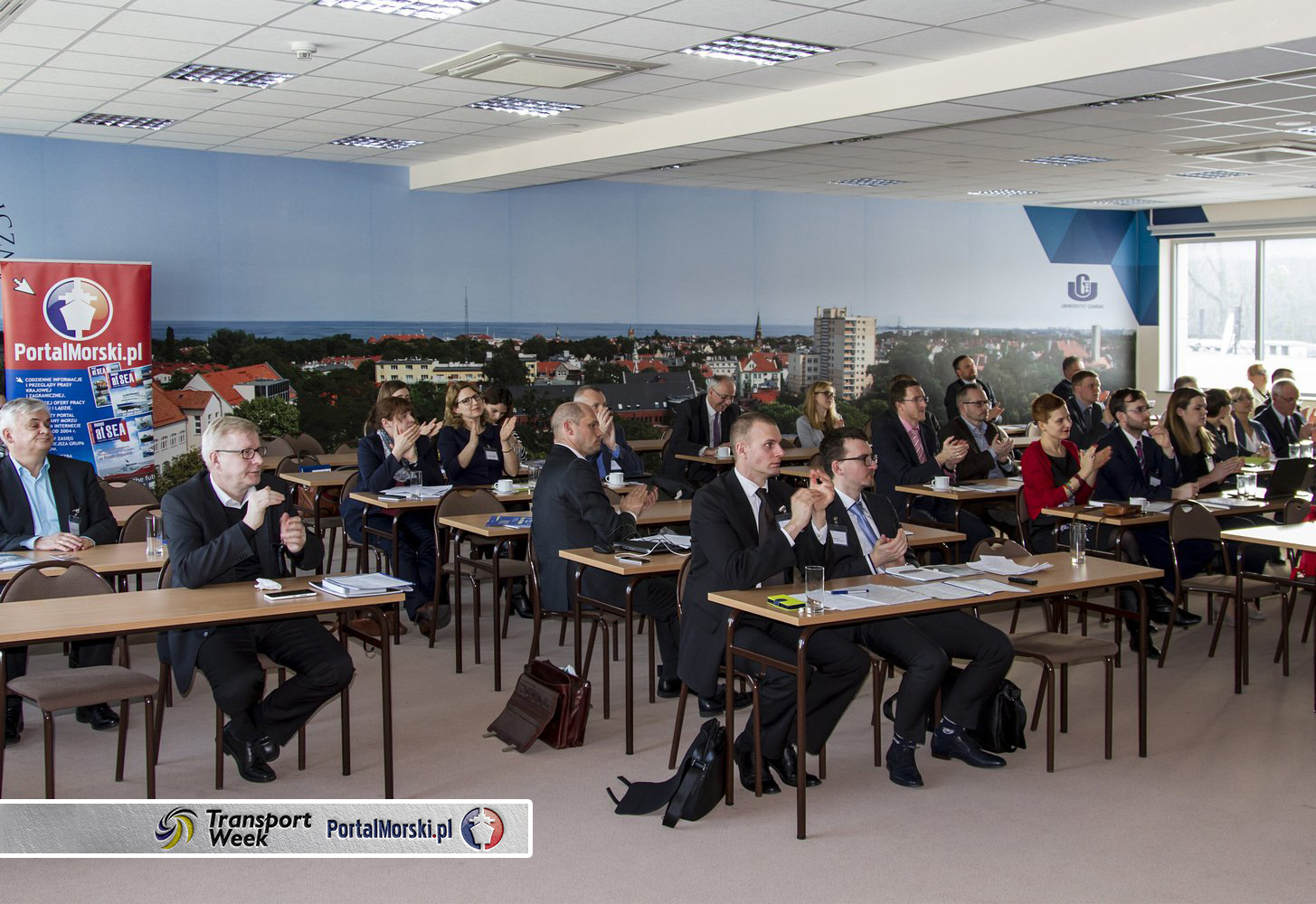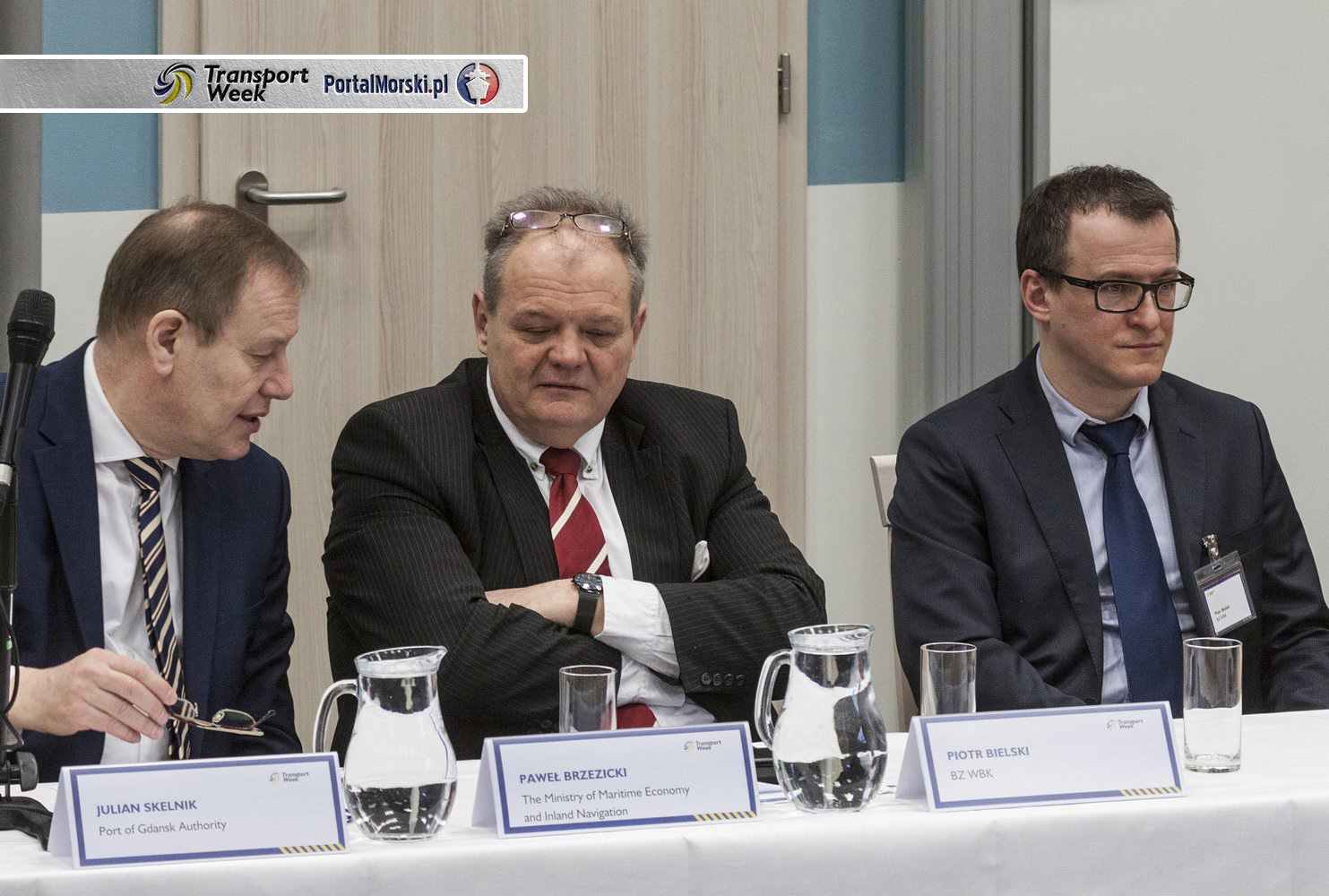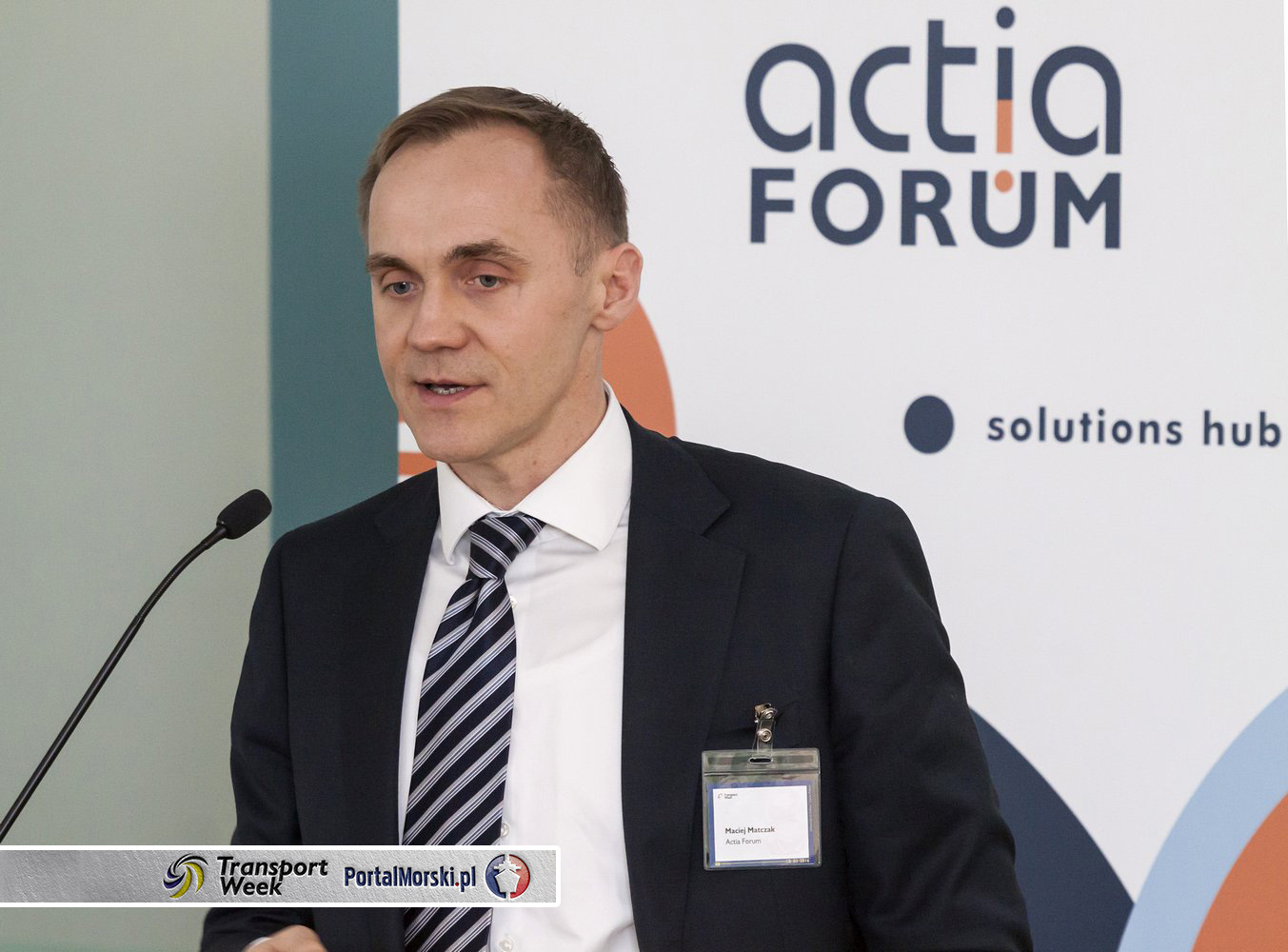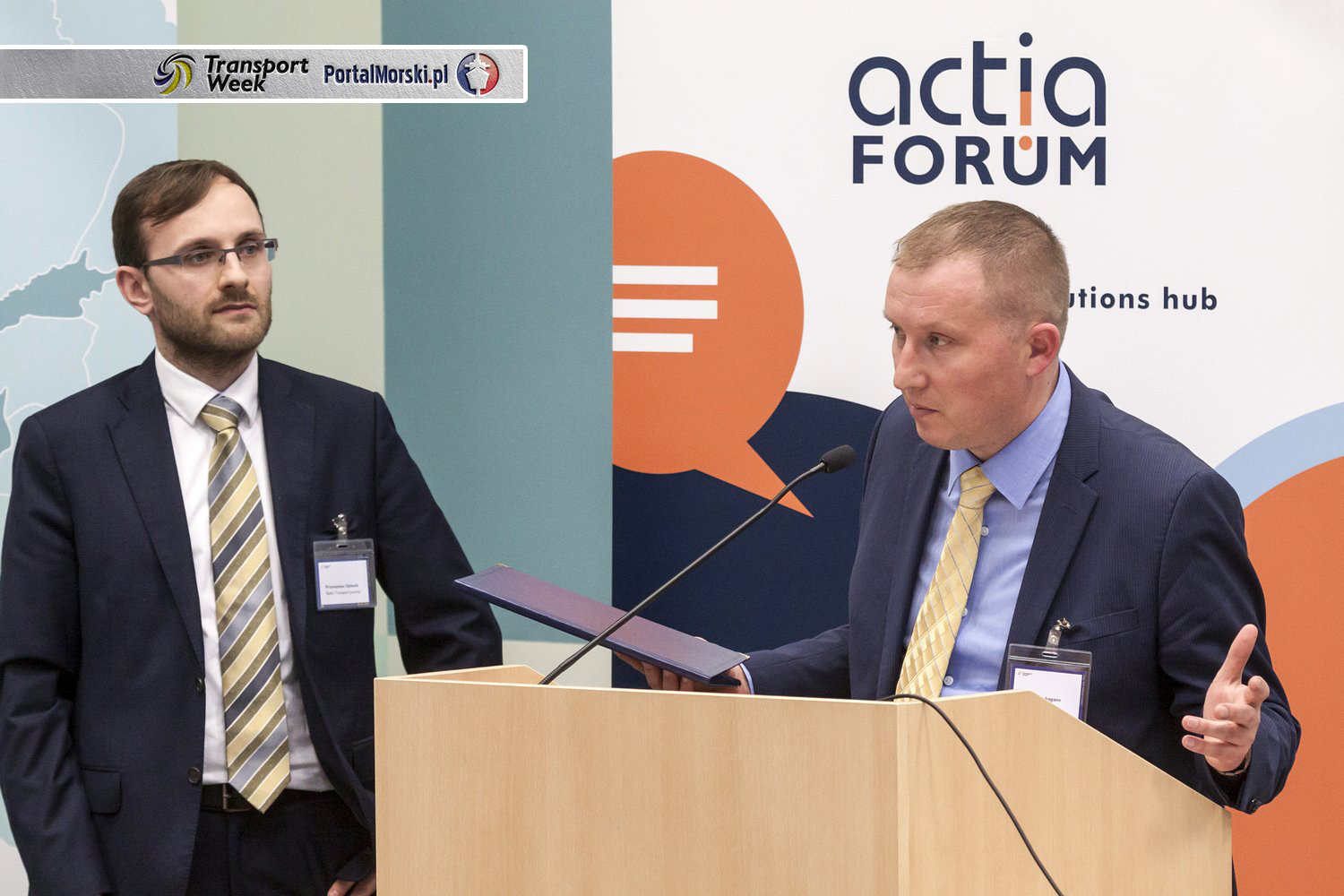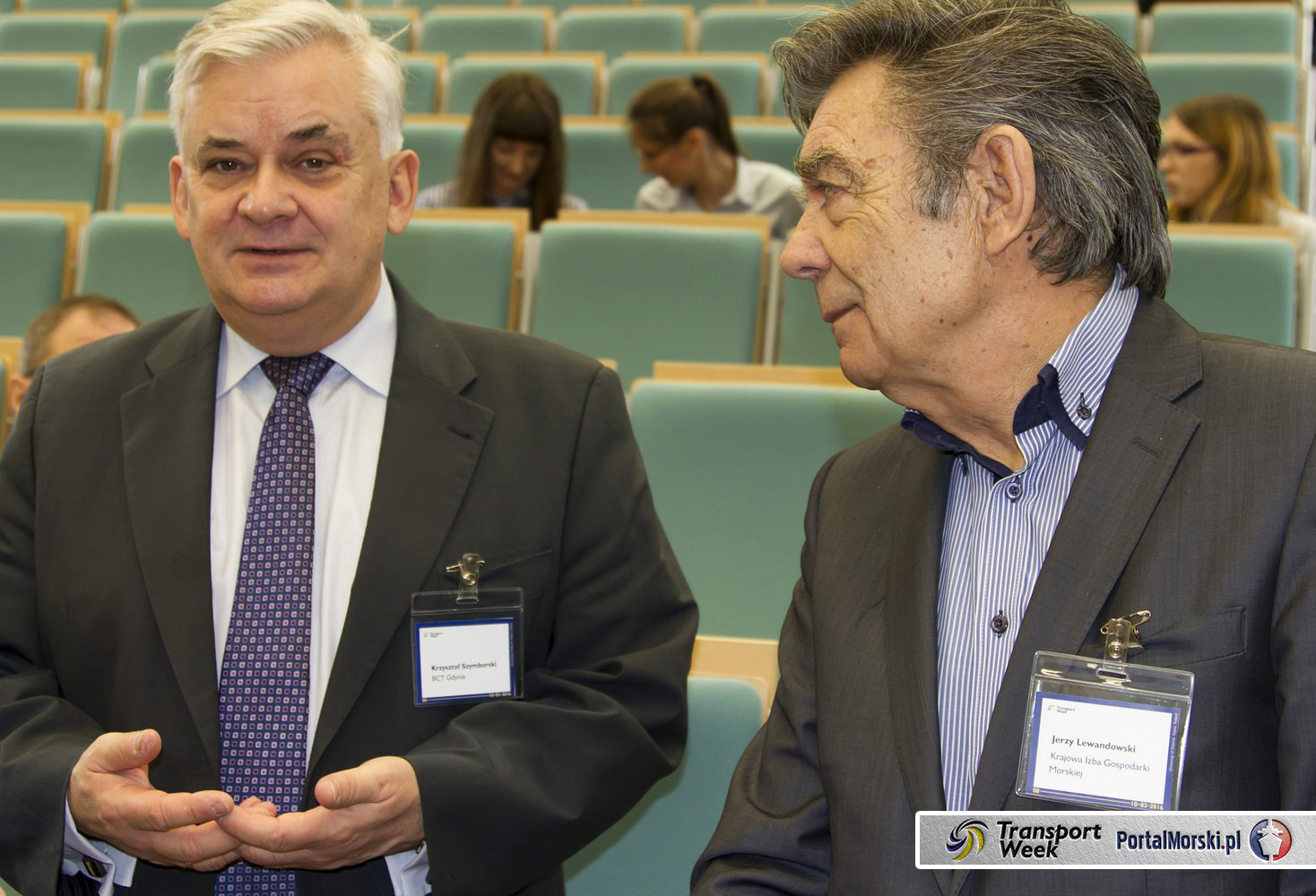Transport Week 2016: all hands on deck for the market to get better

Over 300 participants representing 21 nationalities took part in the 6th edition of Transport Week, one of the most interesting events this year in the CEE and Europe-wide.
Each year the Transport Week gathers expert speakers and audience representing shipping lines, container, seaports and ro-ro shipping operators, seaports and terminal operators, local and EU authorities and various associations. This particular 6th edition of the event represented a high-class meritorical agenda with many opportunities to discuss.
The Transport Week commenced on Tuesday, 8th March with the Ports and shipping of tomorrow conference. The meeting was inaugurated by a perspective for the world of transport & logistics in 2050 given byPrzemysław Myszka, Baltic Transport Journal’s Editor-in-Chief, followed by Johan Algell, the Vice President of SSPA Sweden who presented the challenges and opportunities in the ports and shipping sector.
Key to success? Learning from experience
Ioannis Mispinas, Project Officer for Environmental Protection of EMSA introduced us to the subject of the SECA requirement featuring the monitoring systems of the implementation of Sulphur Directive in the EU countries. What was wrong with SECA (Sulphur Emission Control Area regulation)? Well, first of all – the countries were not ready to police. Individual countries applied an individual approach to penalties. No one was eager to invest in a technology of uncertain future. However, the switchover came without problems. The MGO (Marine gas oil) got cheaper and available since the very implementation of the rule, supported by the EU. What to look out for with the MRV (Monitoring, reporting and verification of EU ETS emissions) then? Clear definition in implementing acts, significant data collection, timely readiness of verification mechanism and reporting plus common policing approach. This interesting viewpoint was presented by Poul Woodwall, the Director of Environment & Sustainability of DFDS Seaways, who was followed byStaffan Herlin from Finnlines, who excerpted the Finnlines experience of running a ro-ro and ferry business under the new emission rules.
The first day of Transport Week ended with a discussion panel on the ‘ports of the future’ concept, moderated by Przemysław Myszka andPrzemysław Opłocki from the Baltic Transport Journal. Experts invited to the floor: Julian Skelnik, Director Foreign Contacts and Public Relations, Port of Gdańsk Authority, Gun Rudeberg, Legal Counsel and Head of Environmental Affairs, Ports of Stockholm, and Krzysztof Gromadowski, Director International Cooperation and Public Relations, Port of Gdynia Authority.
Persuit of peak vs. persuit of stabilization
The container industry is in a deep crisis today. The major part of the conference was dedicated to a diagnosis of existing problems and finding the solutions. James Kyritsis of Drewry raised his voice on that subject. What the researches say is that oceanic shippers cancelled 230 fixed cruises between Asia and Northern Europe last years since they came out to be unprofitable.
‘The fact of a number of new container ships coming to operations this year, ordered still times of a better economic situations does not help the situation. This means that the ship owners will have to withdraw even more units from the East-West corridor – said Kyritsis. Bigger ships are a bigger challenge for the ports that need to keep investing in the infrastructure development.’
The crisis in the container market is visible also in the Baltic ports. As Maciej Matczak of Actia Forum admits, the tempo of trans-shipment has been constantly declining since 2010 and the last year only showed a 12,5 % decline. This is a very bad outcome taking into consideration the global outcome of 5 % improvement. Only Finnish and Danish ports recorded a positive result in Europe, while Russian ports noted the biggest decline of 30 %.
Central Europe, so: Poland, Czech Republic, Slovakia and Hungary are countries of a high potential for a fixed economic growth that will boost the container handlings – explained Agnieszka Kubaszewska-Monik of Seago Line. The Russian market will still have a significant impact. The actual political situation together with the sanctions imposed on Russia do not ease the trade.
An additional problem to the ports may pose the implementation of SOLAS convention earlier this year. According to the regulation, the shippers will have an obligation of verifying the weight of containers dedicated to seaway shipment. Andrew Huxley (TT Club) presented the implementation of the SOLAS.
Dominik Landa from the DCT Gdansk said about the ongoing expansion of the terminal, which commenced in the beginning of the last year and is to be finished by the 2016 Q2.
‘The new wharf will double its capacity to 3 mln of containers yearly which will lead DCT to the tight European terminals elite’ – said Landa.
Day 3 – the Intermodal Conference 2016 gathered experts of various backgrounds. Isabelle Ryckbost (ESPO), the regular visiting expert of the Transport Week 2016 conference officially opened the last day of conferences. The Intermodal day brought a discussion between various Baltic countries representatives from the intermodal transport:Agnieszka Szymczyk (EBRD), Ludmiła Filina-Dawidowicz (West Pomeranian University of Technology in Szczecin), Thomas Kargl (Far East Landbridge), Mindaugas Butnorius (Lithuanian Railways), Stephen Archer (AS Baltic Rail) Wojciech Żuk (BZ WBK) and Krzysztof Gomuła(CLIP GROUP). While Borut Čok from Port of Koper, Carmen Costachefrom Danube Ports and Mindaugas Butnorius from the Lithuanian Rails discussed the bridging opportunities for Baltic, Adriatic and Black seas.
PortalMorski.pl, the Publishers of Poland at Sea printed and online editions were among the media partners of Transport Week 2016.
rel (Transport Week), PBS







